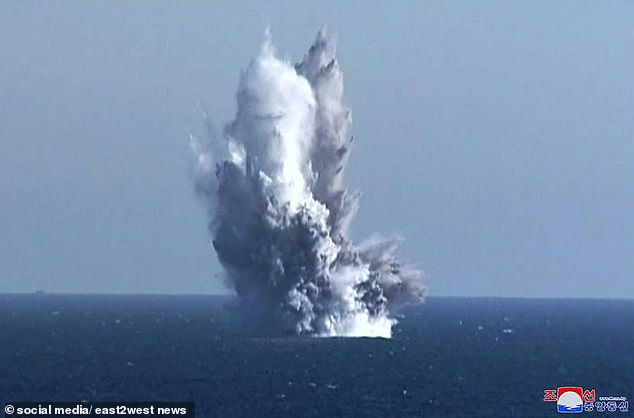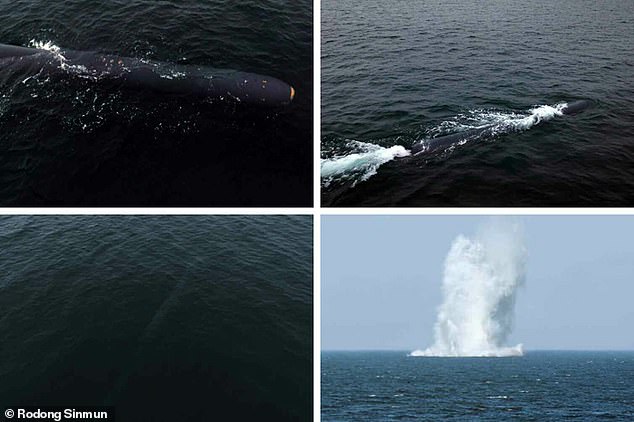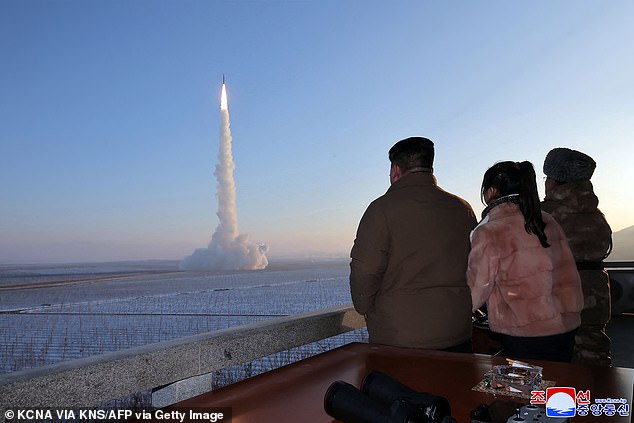North Korea fires cruise missiles towards the Yellow Sea in latest tension-raising move by Pyongyang
North Korea fired several cruise missiles into the Yellow Sea, following the nuclear weapons state’s latest tension-raising move.
The missiles were launched around 7am (10pm UK time on Tuesday) and were analyzed by South Korean and US intelligence agencies, Seoul said.
“Our military detected several cruise missiles launched by North Korea toward the Yellow Sea around 7 a.m. today,” the Joint Chiefs of Staff said in a statement.
“The detailed specifications are being closely analyzed by the South Korean and US intelligence services,” it added.
South Korea did not immediately confirm the exact number of missiles fired or their specific flight details.
The launches marked North Korea’s second known launch event of the year, following a Jan. 14 test flight of the country’s first intermediate-range ballistic missile.
North Korea fired several cruise missiles into the sea off its west coast on Wednesday. In the photo: Kim Jong-un

North Korea said last week it has tested a so-called nuclear-capable underwater attack drone (seen here in March in the South China Sea)
These launches reflected the country’s efforts to expand its weapons range targeting US military bases in Japan and Guam.
Tensions on the Korean Peninsula have increased in recent months as North Korean leader Kim Jong Un continues to accelerate his weapons development and makes provocative threats of nuclear conflict with the United States and its Asian allies.
In response, the United States, South Korea and Japan have expanded their combined military exercises, which Kim portrays as invasion rehearsals, and tightened their deterrence strategies, which are built around nuclear-capable U.S. assets.
In the latest tit-for-tat, North Korea said last week it tested a so-called nuclear-capable underwater attack drone in response to a combined naval exercise by the United States, South Korea and Japan, as it continued to blame its rivals due to tensions in the region.
The statement came nine months after the despotic state first shared images of the armed underwater drones, whose nuclear capabilities have yet to be confirmed.
Kim has repeatedly defended the country’s actions, saying his regime is merely preparing for a war that “could break out at any time.”
Earlier this month, the dictator labeled Seoul his “main enemy” – putting the prospect of reunification on the back foot – as part of the regime’s new stance towards its southern neighbor.

North Korean state media published these images of their ‘underwater nuclear system’ in April

North Korean leader Kim Jong Un (L) and his daughter watch the test launch of a Hwasongpho-18 intercontinental ballistic missile. The undated photo was released on December 19
The North Korean leader also said Pyongyang would not recognize the two countries’ de facto maritime border, the Northern Limit Line, and called for constitutional changes that would allow the North to “occupy” Seoul in war, according to the Korean Central News Agency (KCNA) .
In Seoul, President Yoon Suk Yeol told his cabinet that if the nuclear-armed North carried out a provocation, South Korea would retaliate with a response “several times stronger,” noting the “overwhelming response capabilities” of its military.
At year-end policy meetings in Pyongyang, Kim threatened a nuclear attack on the South and called for a build-up of his country’s military arsenal ahead of an armed conflict that he warned could “break out at any time.” ‘.
Kim also successfully launched a spy satellite into orbit late last year after receiving Russian help in exchange for arms transfers for Moscow’s war in Ukraine, according to Seoul.
